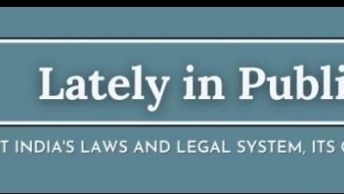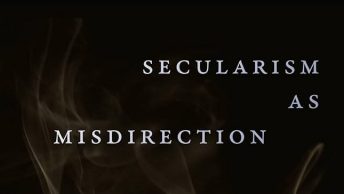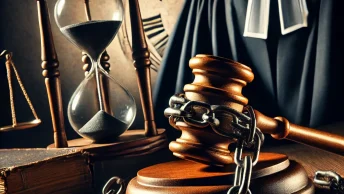we had discussed the unique position occupied by the Lt. Governor of Delhi in
our national capital’s governance structure. This post seeks to understand some
of the facts and circumstances which could have persuaded the Lt. Governor to
disagree with his CoM’s recommendation to dissolve the Delhi Assembly. We also
touch upon Article 239AB, the provision which provides the legal framework for
President’s Rule in Delhi, and analyse how its nuanced difference with Article
356 has a bearing on the suspended animation episode.
over dissolution
erstwhile Chief Minister of Delhi ArvindKejriwal met Lt. Governor Najeeb Jung
to submit his CoM’s recommendation for dissolving the Assembly, the Lt.
Governor expressed his disagreement and referred the matter to the President.
In order to understand whether the Lt. Governor’s disagreement was justified,
it is necessary to understand what facts and circumstances could have persuaded
the Lt. Governor to disagree with his CoM.
S.R.
Bommai v. Union of India mandates such an exercise, albeit in
the context of the Governor, by allowing scrutiny of the material which was considered
while deciding the fate of an Assembly.
considerations could have weighed on the Lt. Governor’s mind that evening – (i)
the AamAadmiParty (“AAP”) government had lost the confidence of the Assembly
and therefore he was not bound by their recommendation; (ii) there was a
possibility of an alternate viable government being formed; and/or (iii) it was
too early to hold fresh elections.
of the Assembly
of the Sarkaria Commission Report
(1987-88) as endorsed by the Sarkaria
Commission Report (2001), S.R. Bommai and Rameshwar Prasad v. Union of India have
consistently opined that an Assembly’s confidence in the CoM can only be tested
on the floor of the Assembly. We believe
that ‘confidence’ in this sense means a vote specifically on the point of
whether the CoM should continue in office, i.e., a vote of confidence or
no-confidence as the case may be. The defeat of a motion on whether to
introduce a bill ought not to be considered a vote on ‘confidence’. In fact,
the Sarkaria Commission Report (1987-88) seems to suggest that the defeat of such a
motion may at best be viewed as an indicator that the CoM is “likely to have lost majority support”,
warranting a test of confidence on the floor of the Assembly to establish
whether the CoM has actually lost
confidence.
introduce the Jan Lokpal Bill (even if it was the cornerstone of the AAP
government’s agenda) could not have been interpreted by the Lt. Governor to
mean that the AAP government had lost the confidence of the Assembly and that
therefore he was not bound by their recommendation (as suggestedhere).
If the Lt. Governor was under such an impression, he should in an ideal
situation have asked Kejriwal to prove his majority on the floor of the
Assembly. However, since Kejriwal had resigned from the post of Chief Minister,
the possibility of a floor-test was precluded. In such a situation, could the
Lt. Governor have simply assumed that the AAP government had lost the
confidence of the Assembly and that therefore he was not bound its
recommendation? Legal precedents seem to answer this question in the negative.
Government
alternate government being formed, we believe there were only two possible ways
by which this could have been achieved:
members of the legislative assembly
(“MLAs”) from one political party individually joining/extending support to
another political party; or
MLAs from two or more parties coming
together to form an alliance of sorts.
although it does not strictly fall foul of the anti-defection laws under
Schedule X of the Constitution (See here).
Point (ii) has more to do with political opportunism than law. Both these
points are questions of political realignment, which can neither be tested nor
faulted on principles of law. In any case, the political landscape in Delhi has
changed so much since February, 2014 that anydiscussion onpossible realignments
is rendered superfluous. Therefore, we skipany discussion on theseaspectsand
stick to the subsisting legal issues at hand.
elections
within a short span of the previous elections, the Sarkaria Commission Report (1987-88) had recommended that if an
assembly had not even run half its term, it would be too early to hold
elections (See here).
The Union, in its affidavit submitted to the Supreme Court (“SC”), has adopted
a similar stance by asserting that the decision to keep the Delhi Assembly in
suspended animation was taken in public interest (See here).
In this context, ‘public interest’ could either mean (i) the possibility of a
viable government being formed (as mentioned above), or (ii) avoiding the huge
expenses involved in conducting fresh elections within a short span of the 2013
Assembly Elections. The SC is presently seized of a somewhat related issue in Voters Party v. Union of India[1],
which relates to whether the huge expenses incurred in conducting by-elections
can be a ground for barring politicians from contesting elections in two
constituencies simultaneously. It would
be interesting to see the SC’s views regarding whether burden on the exchequer
is a valid ground for determining how and when elections should be conducted.
239AB
for disagreeing with the recommendation to dissolve the Delhi Assembly, the
matter was referred to the President for the Union’s decision. The Union, in
its wisdom, decided that this was a fit case to invoke Article 239AB and impose
President’s Rule in Delhi. The legal issues surrounding whether inability to
form a majority government is a “failure of Constitutional machinery” has been
aptly dealt with on this Blog in the past (See here
and here),
albeit in the context of Article 356, and we shall not be reiterating the same
in this post. However, there is a subtle difference in the language of Article
356 and Article 239AB which may reflect in how the dissolution, if at all, of
the fifth Delhi Assembly plays out.
is imposed under Article 356 and a State Assembly is kept in suspended
animation, the Governor’s power to dissolve the Assembly under Article
174(2)(b) is typically assumed by the President through Article 356(1)(a) (for
instance, when Bihar was brought under President’s Rule in 2005). Interestingly,
the Lt. Governor’s power to dissolve the Delhi Assembly flows not from the
Constitution, but from Section 6(2)(b) of the Government of National Capital
Territory of Delhi Act, 1991 (“GNCTD Act”). We believe that the assumption of
the power to dissolve the Assembly will not be available to the President in the
context of Delhi. This is because (i) there is no provision in Article 239AB
which allows the President to assume the Lt. Governor’s powers, and (ii) the Order
imposing President’s Rule in Delhi can only suspend provisions of law, and does
not envision arrogating the powers under those provisions of law to the
President. Therefore, unless it is argued that an order dissolving the Assembly
falls within the ambit of an “incidental and consequential” action which is
“necessary or expedient” for administering Delhi, the Order under Article 239AB
can at best suspend the Lt. Governor’s power and cannot usurp it.
surrounding the Delhi Assembly, this would mean that while the Union can revive
the Assembly by revoking the Order under Article 239AB, dissolution is still
the Lt. Governor’s prerogative. The Union may have suspended Section 6(2)(b) of
the GNCTD Act (we are not aware of the exact contents of the Presidential Order
issued in February, 2014), but any decision to dissolve the Assembly has to
emanate from the Lt. Governor. Whether the Union invokes Section 49 of the
GNCTD Act to issue directions to the Lt. Governor in this regard or leaves the Lt.
Governor free to decide for himself is a political question. But if and when
the fifth Delhi Assembly is dissolved, this post may assist in deciphering the
legal symphony to which democracy will be dancing in our national capital in
the coming days.
to the basics, hopefully
derived out of the Delhi Assembly issue for the 2014 General Elections
undoubtedly contributed to dulling the legal questions at hand. However, we would
be doing a great disservice to our constitutional fabric if we limit
discussions on the functioning of our constitutional institutions to only partisan
politics and electoral opportunities.





